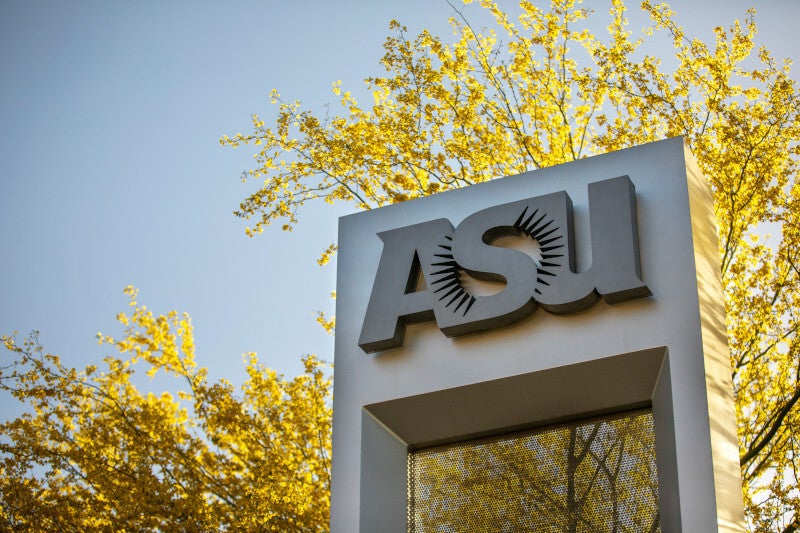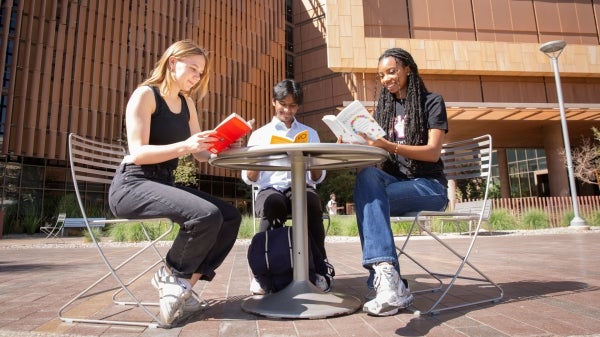Fueled by questions, guided by purpose: Grad prepares for research role at NIH
Alexander Sastokas. Courtesy photo
Editor’s note: This story is part of a series of profiles of notable spring 2025 graduates.
During his time at Arizona State University, as a student in the School of Life Sciences, graduate Alexander Sastokas followed his curiosity wherever it led, even when it completely rerouted his plans for the future.
From San Francisco, Sastokas — who majored in biological sciences with a concentration in biomedical sciences, on top of earning a certificate in evolutionary medicine — came to ASU with ambitions of becoming a physician, and dove headfirst into the world of medicine.
But somewhere along the way, he made discoveries that challenged his ways of thinking.
“One plus one doesn’t always equal two,” Sastokas said, describing the counterintuitive discoveries he encountered in his work on antifungal resistance.
Through his research projects, he learned that two drugs, each effective on their own, could sometimes be less effective or even detrimental when used together. It was this kind of scientific unpredictability — this call to question the known and seek out the unknown — that sparked his transition from premed to a full-blown passion for research.
Sastokas’ dedication led him through four years of research involvement, leadership within clubs and community outreach. His work with the Kerry Geiler-Samorette (KGS) Lab, the Center for Mechanisms of Evolution and the School of Life Sciences Undergraduate Research program allowed him to explore biomedical sciences in depth.
As his roles in the lab expanded from entry-level assistance to earning a SOLUR Fellowship and researcher position, so did his sense of belonging in the scientific community.
His breadth of involvement earned Sastokas one of the highest honors for an undergraduate in his college: the Dean’s Medal from the School of Life Sciences. Recognizing both academic excellence and service, the award was a culmination of his years spent mentoring fellow students, championing undergraduate research and building inclusive pathways for others to engage in science.
As president of ASU’s chapter of Project Sunshine, a club focused on pediatric volunteer work, Sastokas and students from all majors gathered together around a shared mission: to uplift young patients with complex needs.
“It wasn’t just clock-in, clock-out service, we made things like cards and bracelets,” he said. "Everyone who was there wanted to make these patients’ days brighter. It was about community.”
Read on to learn more about Sastokas' ASU journey and future plans.
Note: Answers may have been edited lightly for length and/or clarity.
Question: What was your “aha” moment when you realized you wanted to switch from pre-med to academia?
Answer: It came during my research on antifungal drug resistance. I realized I loved diving deep into questions where the expected outcomes don’t always make sense. I found myself working late in the lab, disappointed when I couldn’t run an experiment, not because I had to, but because I wanted to. That’s when I knew research wasn’t just a career option. It was a passion.
Q: Which professor taught you the most important lesson while at ASU?
A: Kerry Geiler-Samerotte, without a doubt. There wasn’t one particular moment. It was more about our ongoing conversations, her mentorship and the way she challenged me to communicate science clearly and to think critically. Our one-on-one meetings were where I found confidence that there was space for me in academia.
Q: What’s the best piece of advice you’d give to those still in school?
A: Say yes to everything as much as you can. Get involved early and try everything, even if it feels outside your comfort zone. Some clubs I thought would be crucial to my career weren’t a great fit, but others I joined on a whim became places where I met some of the most genuine people. For example, the Film Photography Club; I don’t even shoot film, but it gave me lifelong friends.
Q: What are your plans after graduation?
A: I’m moving to Maryland to start a position in August at the National Institute of Health in the post-baccalaureate Intramural Research Training Award (IRTA) program. I’ll be doing full-time research, training under a principal investigator. I’ll also be presenting at conferences in Boston and China over the summer!
More Sun Devil community

8 Flinn Scholars set to begin college careers at ASU this fall
Eight of this year’s 20 Flinn Scholars have chosen to attend Arizona State University this fall.Valued at over $135,000 per student, the Arizona-based Flinn Foundation scholarship supports…

Essential reading: Books with lessons to live by
“Books are the training weights of the mind.” — Epictetus, Greek Stoic philosopherThis is the 14th edition of the annual Essential Reading feature, which offers book recommendations by faculty and…

ASU Online grads honored at campus celebration
Rodney Perkins dreamed of becoming a doctor since high school, but after earning his undergraduate degree, he felt his college experience hadn’t fully prepared him for the next steps.This week, the…